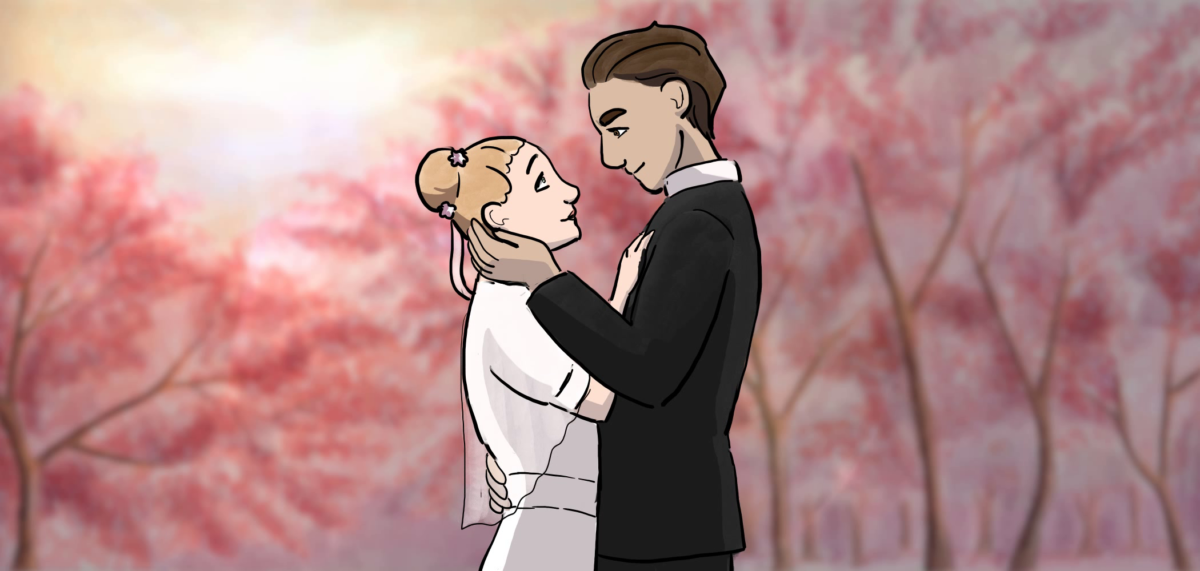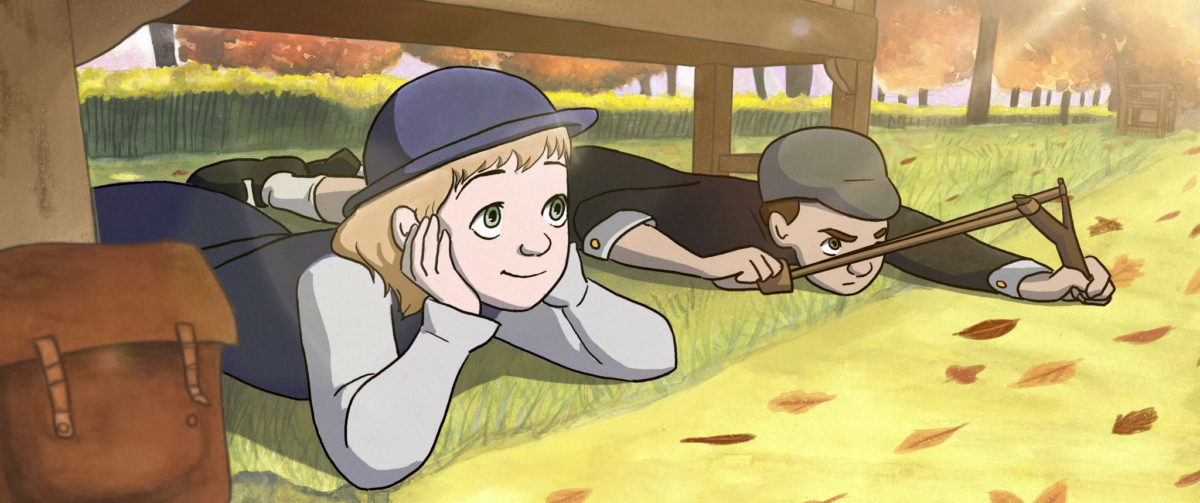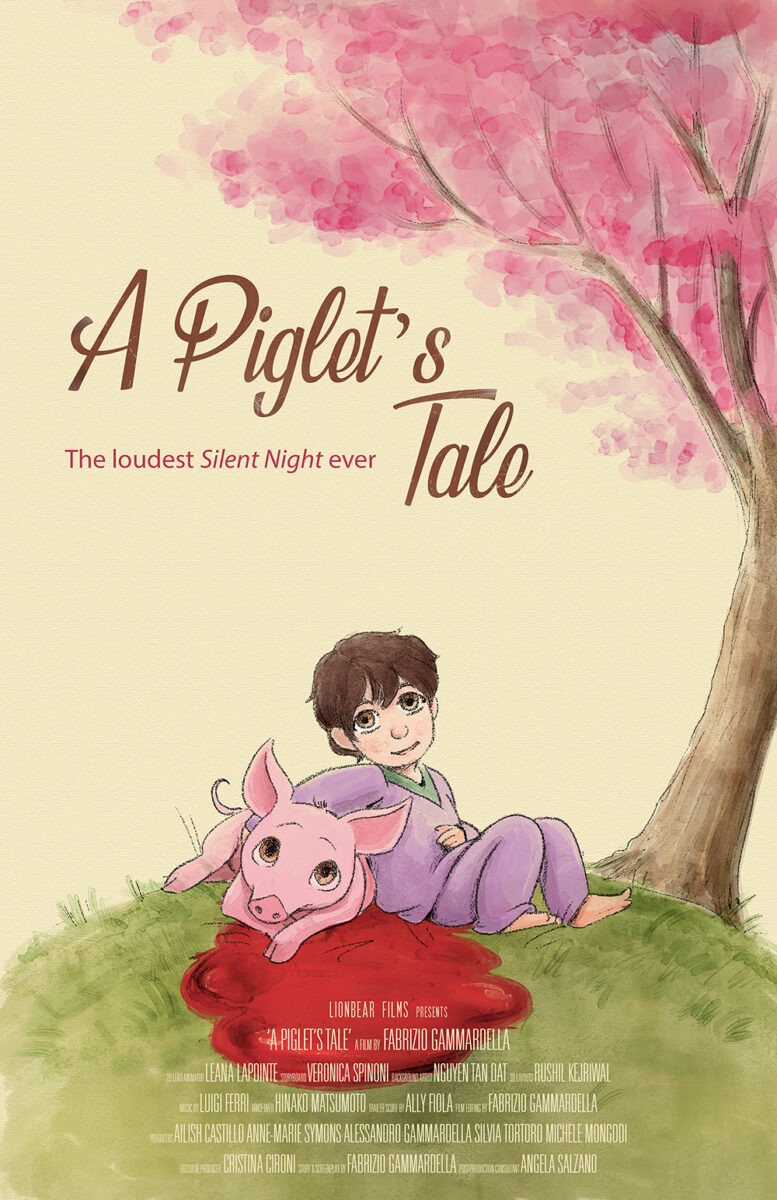The grief of parents having lost their first-born, coupled with a crucially vital global issue is the backdrop and context to Fabrizio Gammardella’s brand new insightful short A PIGLET’S TALE, which is influenced by a broad range of classic animation.
Film And TV Now recently spoke with the writer-director of the short about his work.
FILM AND TV NOW:This is a multi-faceted animation, dealing with an important world issue, as well as the grief of parents who seem to use the piglet as a way of coping. What was the start off point for this animation?
FABRIZIO GAMMARDELLA: Definitely trying to visually develop the first draft of a detailed storyboard, once the script got completed. Animation is an extremely time-comsuming and risky film-making technique. It really takes a toll on you, financially and mentally.
I had to be sure that there was something to the story I was about to tell that could keep people hooked throughout the vision of the film. Still, it was a leap of faith and a crazy four-year journey.
FTVN: It is quite a dark tale when you think of the kid-cum-piglet character, which might be deemed a little too dark for younger audiences. Who is the target audience for this animation?
FG: This short film was meant to be for teenagers and adults since its’ first stages of production. I was aware that there was no way of showing this to younger audiences.
Actually, the whole idea of a Disney-style project which gets so dark towards the end is thoroughly planned device through which it can catch people off guard and deliver a huge blow. We’re talking about billions of lives here. When I say lives, I don’t just mean animals’ lives. The whole farming industry business heavily affects human lives as well in the most detrimental way possible.
FTVN: How challenging was it to script?
FG: Extremely challenging. When you approach a subject that four years ago wasn’t even so relevant as it is today – given the crazy circumstances we are trying to cope with – you feel pretty lost. You know that you’re aiming at getting a strong message across but at the same time you don’t want to cross the line and turn people away. You want to make them think, look at a thorny topic from a different perspective.

FTVN: What’s interesting is you use some interesting angles that are unconventional for animated shorts. Did you have a specific visual brief to work from as you were developing the project?
FG: Yes, 100%. I spent months working on the composition of each and every shot of the film. I’m extremely fastidious when it comes to that aspect of a project. The way a shot is framed heavily influences the specific message that a given scene is delivering.
They don’t only have to look nice, visually speaking, they must enhance the feeling you’re aiming for and move the story forward as well. Especially in a no-dialogue film as this one.
FTVN: It reminds us of classic Christmas fayre like THE SNOWMAN in a visual sense. What were your influences?
FG: THE SNOWMAN was one of the short films that had a huge role to play in the development of our film. However, not the main one. My background is in Japanese animation. I grew up watching Japanese live and animated features films and TV series (Anime).
My artistic influence comes from several directors ranging from Satoshi Kon (Paprika), Isao Takahata (The Tale of the Princess Kaguya) and Hayao Miyazaki (My Neighbor Totoro, Kiki’s Delivery Service) – to Takeshi Kitano (Violent Cop), Kim Ki Duk (Iron 3) and Chan-Wook Park (Oldboy).
FTVN: Tell us about your production team.
FG: What I am about to say is gonna sound crazy, but it is the whole truth – I’ve never met in person (not even a single time) almost 80% of the production team. I still can’t believe how committed any of them have been to the cause over the last four years.
From the French 2D animator, Leana Lapointe – whose talent and faith in the project was literally off the charts, to my super trusted storyboard artist from Italy, Veronica Spinoni. Not to mention the background artist Nguyen Tan Dat from Vietnam, who literally went to a crucible to deliver the illustrations we needed to complete the film. With limited access to a really good Internet connection or working equipment, he went more than the extra mile to get the job done.
Last, but not least, our wonderful and super talented producer Ailish Castillo, with whom I had worked with as an editor on her beautiful debut short film THE WIDOW. She truly believed in the project from the first time I brought it to her attention. I can’t stress how helpful she has been over the last few months. Invaluable.
FTVN: How long did it take to shoot and how did you raise finance for the project?
FG: Since its’ inception the whole project took four years. I invested in the film most of my savings over the last three and a half years until – thanks to Ailish – we managed to launch a crowdfunding campaign that made us raise some additional funds, crucial to go through the final stages of post-production and distribution.
FTVN: Did you model the human characters on anybody in particular?
FG: Yes, 100% – Father and mother are the spitting image of my parents. The kid is me and the rest of the animated cast looks like relatives and friends of mine.
To be honest, this project is also a tribute to the love, support and affection that my family showed me over the first thirty-five years of my life. I wouldn’t be here without them. They are my heroes and I still look up to them every day of my life. I do consider myself the most fortunate son in the world.

FTVN: Did you storyboard at all?
FG: As I mentioned before, story-boarding is the key to the success of a short animated film. There is, in my opinion, no way to see a short film completed efficiently, without going through a super through pre-production phase.
FTVN: Do you have other animation film projects in the pipeline?
FG: Oh yes – 100%. I’m working already on a new short animated film for kids. It’s called SUPERTRAMP and is inspired by the incredible story of Christopher McCandless, an American hiker and adventurer who died from starvation, while camping alone on a remote trail in Alaska. His nickname was ‘Alex Supertramp’
However, in my short film the name refers to a stray dog. We’re already storyboarding the story actually.
FTVN: What are your hopes for the project for the future?
FG: That’s a tough one. I’m not immune to awards, even though that wasn’t the main purpose of the film. I’d love to see this story being successful in Film Festival around the world. The truth is, I really wish for the film’s message to reach as many people as possible. I don’t want to push my beliefs on people, but I do think we have got to a point in human history where the animal welfare issue can’t keep flying under the radar. The consequences can be disastrous.
FTVN: Finally, what are you most proud of about A PIGLET’S TALE?
FG: Oh well, its’ message. Through a very dark story, we still try to deliver a message of love and hope. We wish for the future to bring more peace to our lives.
In order to do so, we must understand we are all interconnected. There’s no humans or animals. There’s just one universal being living the planet. We’re all responsible for rooting out as much suffering as possible from this world. Call me naïve, but I truly believe that sometimes simple truths are the closest to the solution of life threatening global issues.





























